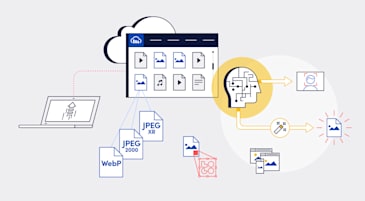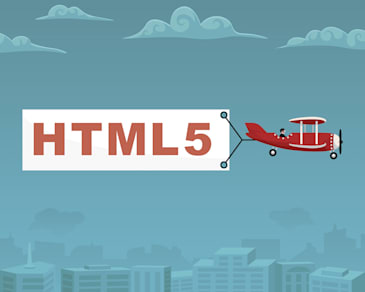JPEG 2000 is an image format created by the Joint Photographic Experts Group (JPEG) in 2000 to replace the JPEG format. JPEG 2000 files have the extension .JP2. The format uses discrete wavelet transform (DWT), which is the only standard compression scheme that provides both lossless and lossy compression. JPEG 2000 compression works through pixel-based raster files that produce higher-quality images with better compression than JPEGs.
JPEG 2000 can be used for both web and print publishing. It can also be adapted for motion imaging video compression. JPEG 2000 was selected as the video coding standard for digital cinema in 2004. The Library of Congress recommends JPEG 2000 as a preferred format for digital photographs.
JPEG 2000 is not widely supported, so its primary use is for archival purposes. However, JPEG 2000 files can produce sharper, deeper, and more detailed images than JPEGs.
Safari is the only web browser that supports JPEG 2000 natively. To view JPEG 2000 files on other browsers, you need a plug-in. The following browsers support JPEG 2000 via plug-ins:
- Chrome
- Edge
- Firefox
- Opera
- IE
- Chrome for Android
You can also open JPEG 2000 files in the latest version of Photoshop.
Besides being slated for many types of still images (e.g., bilevel, gray level, color, multicomponent) with various characteristics, JPEG 2000 compression also unifies imaging models, such as those for real-time transmissions, image-library archival, limited buffers, and client-server structures. Image compression usually occurs in digital cameras, scanners, frame grabbers, medical mechanisms, satellite systems, and photo-editing programs.
JPEG 2000 performs the following tasks:
- Supports progressive decoding, an efficient code stream that displays a lower-quality version of an image during download. The quality progressively improves as more data bits arrive.
- Delivers both lossless (bit-preserving) and lossy compression within a code stream. As a comparison, JPEG compresses only lossily. JPEG 2000 compression, being lossless, ensures retention of more image data during the conversion process, providing a clear advantage for those who require high fidelity in their images.
- Preserves the transparency in images.
- Enables the handling of color-space information, metadata, and interactivity in networked applications through the
.jp2and.jpxfile formats. As specified in the standard document RFC 3745, the MIME types for JPEG 2000 areimage/jp2,video/mj2,image/jpx, andimage/jpm. - Affords higher ratios for lossy compression. As pointed out in a previous post, case studies have revealed that JPEG 2000 compression works more effectively, and comparing JPEG vs JPEG 2000, you get a 20-200 percent boost in performance with the latter. Typically, the peak signal-to-noise ratio or mean square in the root serves as a yardstick for measuring the efficiency of lossy compression.
- The format introduces the ability to select the order of progression of resolution, quality, color components, and position. This level of fine-tuning makes JPEG 2000 more flexible and adaptive to specific user requirements compared to traditional JPEG..
Ultimately, JPEG 2000 delivers higher quality than JPEG for images of the same size.
Given the numerous advantages of JPEG 2000, it’s not surprising that it finds applications in various fields, despite its limited support among web browsers. Here are some common use cases:
Archival Storage
JPEG 2000’s capability to offer both lossless and lossy compression makes it an ideal choice for archival purposes. Many institutions such as the Library of Congress recommend the use of JPEG 2000 for the long-term storage of digital photographs and documents.
Digital Cinema
As the video coding standard for digital cinema since 2004, JPEG 2000 allows for high-quality, high-resolution video compression, which is a key requirement in the film industry.
Medical Imaging
JPEG 2000 is often the format of choice in the field of medical imaging. Its ability to maintain high image quality at lower bit-rates makes it suitable for detailed imagery like MRI, CT scans, and X-rays, where loss of information could be critical.
Geographic Information Systems (GIS)
In GIS applications, the superior compression and quality benefits of JPEG 2000 are used for satellite imagery and large-scale maps. Its capabilities in handling large image files make it particularly useful in this field.
Real-Time Transmission
For real-time image and video transmission, JPEG 2000 can be effective due to its progressive decoding features. This allows the receiving system to display a lower quality version of the image or video while the full data is still being transmitted, which can be especially useful in low-bandwidth situations.
Remote Sensing
In remote sensing applications, where data is collected from satellite or high-flying aircraft, JPEG 2000’s efficient compression algorithms make it easier to transmit data back to Earth without losing critical details.
Print and Publishing
While not as commonly used as other formats like TIFF, JPEG 2000 is also useful in print and publishing for its high-quality image representation. JPEG 2000’s ability to produce images with better compression and quality for both web and print publishing sets it apart in the publishing world. The fine-tuning options offered, such as the ability to select the order of progression of resolution and quality, makes it particularly appealing to professionals who require a balance between compression and visual fidelity.
Surveillance Systems
Some modern surveillance systems employ JPEG 2000 to take advantage of its high compression ratios and image quality. This is particularly useful for long-term storage of surveillance footage where quality should not be compromised.
Similar to the TIFF image format, JPEG 2000 offers the following benefits:
- The capability of showing bilevel, gray-scale, palette-color, and full-color data in several color spaces.
- No limit for the amount of private or special-purpose information in the metadata.
- Extensibility and seamless evolvement as needs arise for new features.
- A choice of compression schemes with time-space tradeoffs for application developers.
- The capability of handling large images, i.e., those that are greater than 64k x 64k pixels, also natural and computer-generated imagery, without tiling.
- Low bit-rate compression down to below 0.25 bits per pixel for high resolution, gray-scale images.
Additionally, JPEG 2000 offers the following advantages for the production process of video broadcasts:
- An intraframe compression scheme that encodes each frame independently and that can cut video signals anywhere without repercussion—a significant plus for content-editing apps.
- Bit errors, which create less visual artifacts than the standards set by the Moving Picture Experts Group (MPEG).
- Ultra low latency, which is key for live TV content.
- Scalability for both resolution and quality.
- Robust pixel shifts, which retain the same quality improvement in successive compression and decompression processes over the original material.
As awesome as JPEG 2000 is, the undesirable effects of adopting it are nontrivial, hence the format’s limited use and support.
- JPEG 2000 is only supported natively by Safari. However it can be viewed in other browsers via plugins.
- JPEG 2000 is not backward compatible. To also leverage the original JPEG format, developers and other digital professionals who adopt JPEG 2000 must code in a new standard.
- Encoding JPEG 2000 files, which involves modifying the CPU and adding code, is resource intensive, requiring much more memory for processing. Given the high capacity of modern machines, that issue likely no longer exists. However, when JPEG 2000 first debuted in 2000, its memory requirement posed a significant concern.
- Websites and camera manufacturers delayed acceptance of JPEG 2000 until it was widely adopted.
- JPEG 2000’s encoding process is slower and more complicated than JPEG’s.
- JPEG 2000 is much less content adaptive than JPEG, and choosing an ultralow target bitrate would mess up an image. Depending on the image content, you would need to manually adjust the bitrate.
- Base Technology and Efficiency: JPEG 2000 is based on [wavelet](https://cloudinary.com/glossary/wavelet-compression) technology, which offers a more efficient compression mechanism. This provides it with an edge in retaining image details during compression, especially in lossless modes.
Despite its lack of popularity in photography, JPEG 2000 is widely in use in the medical and wireless multimedia arenas. Most diagnostic imagery, such as MRI, CT scans, and X-rays, are encoded as JPEG 2000. Besides, because JPEG 2000 fully meets the data-compression requirements for digital cinema, e.g., high dynamic range, color spaces, high image resolutions, and lossless compression, JPEG 2000 is the format of choice for digital-cinema operations.
The table below shows the pros and cons of the seven most common image formats. Notably, you’ll see at a glance how the three JPEG formats are stacked against one another: JPEG 2000 versus JPEG and JPEG XR.
| Pros | Cons | File Extension | Browser Support (Without Plugins) | Creator | |
|---|---|---|---|---|---|
| PNG |
|
|
|
|
PNG development group, now sponsored by W3C |
| JPG |
|
|
|
|
Joint Photographics Expert Group |
| JPEG 2000 |
|
|
|
|
Joint Photographics Expert Group |
| TIFF |
|
|
|
|
Adobe |
| JPEG XR |
|
|
|
|
Microsoft |
| WebP |
|
|
|
|
|
| GIF |
|
|
|
|
CompuServe |
JPEG 2000 trumps JPEG in many ways. In my opinion, if universal browser support is not a must for your project, JPEG 2000 is your go-to format.
I hope that giant enterprises like Sony and Panasonic as well as developers worldwide will accelerate their adoption of JPEG 2000. Subsequently, browser engines and software developers will be incentivized to jump on the JPEG 2000 bandwagon, resulting in a big step forward for the image-format sphere.
- Image Formats: Getting it Right
- Progressive JPEGs and green Martians
- Animated WebP: How to Convert Animated GIF to WebP and Save Up to 90% Bandwidth
- JPEG Image Optimization Without Compromising Quality With JPEGmini and Cloudinary
- Why JPEG Is Like a Photocopier
- Check for WebP Browser Support to Dynamically Deliver Images
- Adopting the WebP Image Format for Android on Websites Or Native Apps
- Optimizing Animated GIFs With Lossy Compression
- Vue.js Tutorial: Image Optimization for Web Apps







